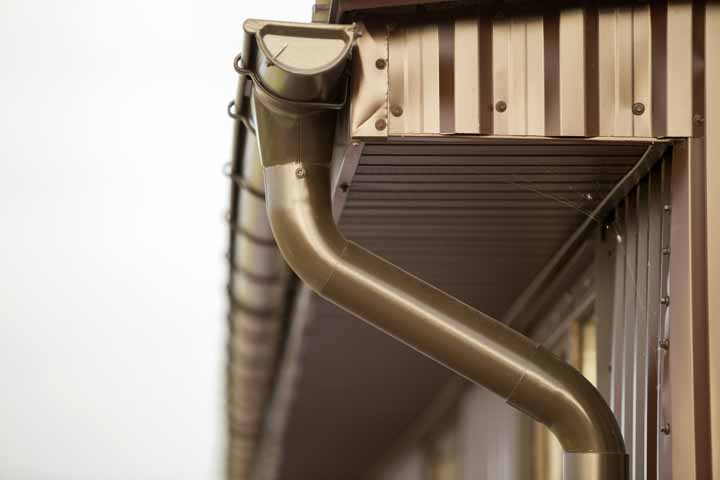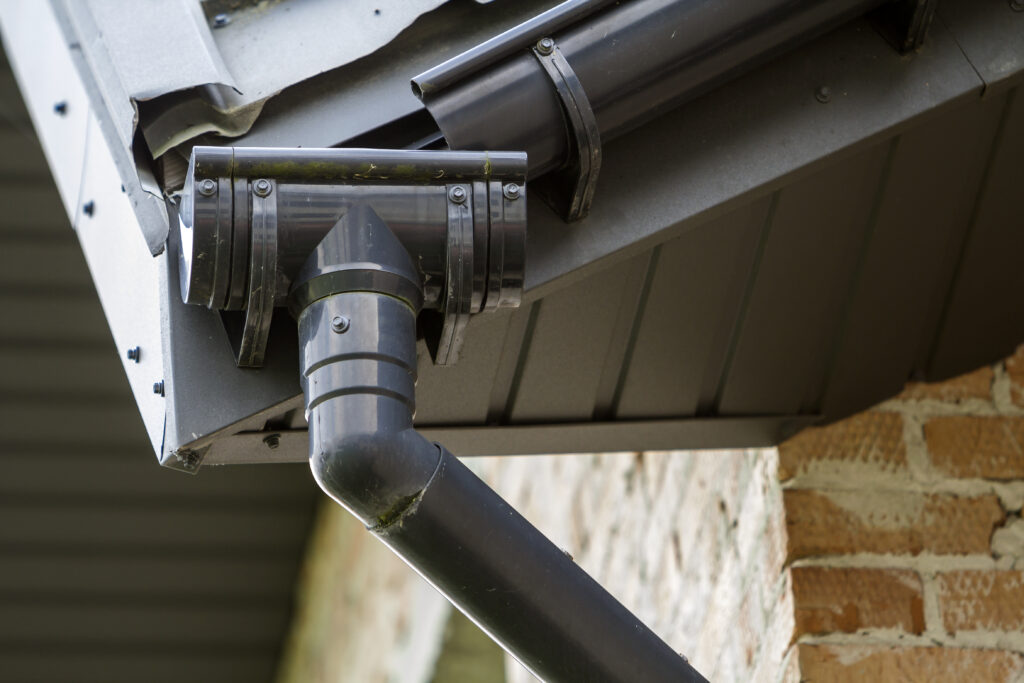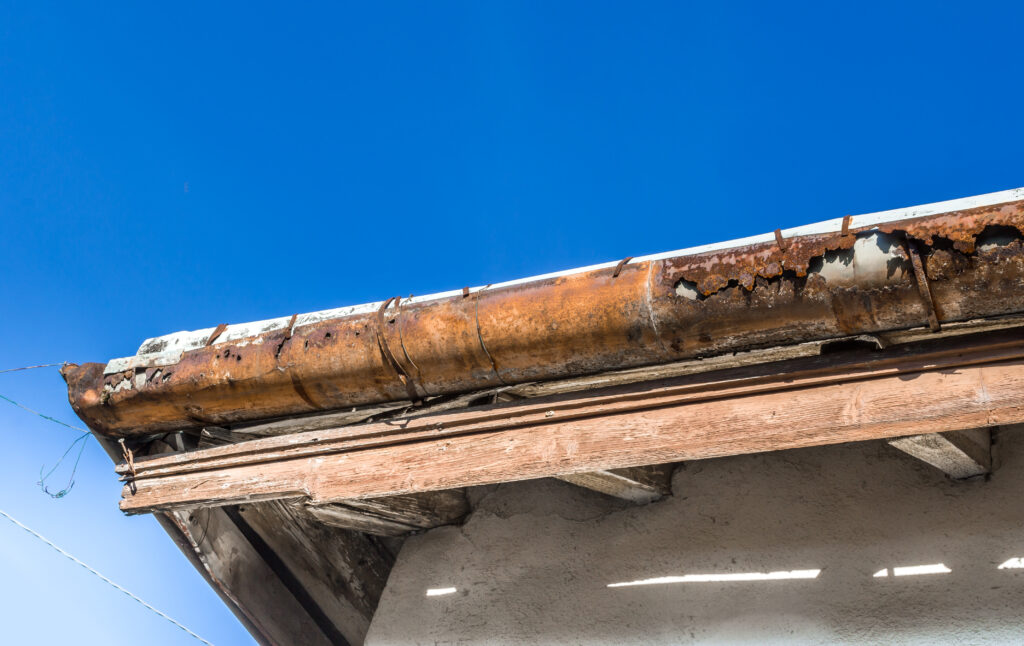What are the Pros and Cons of Fiber Cement Siding?
What is Cut Fiber Cement Siding and What are its Benefits? Fiber cement siding is a building material that has … Read More →

Every so often, you’ll see a house without any gutters on it, and while it looks strange, it may be okay for this home. But that’s not usually the case.
Most houses need gutters, not because they look normal, but because they protect the house from rain and water and keep your home’s foundation safe. In this article, we’re going to answer the question, “Do you have to have gutters on your house?” Let’s take a look.
Gutters are used to control the flow of water when it hits your roof. The gutters channel the water away from your home, so it stays away from your foundation, preventing water damage. Without a gutter system to protect your foundation, water can seep into it and slowly cause deterioration over time.
Some of the damage that this water can create includes
Gutters and downspouts, when maintained, protect against these water issues and control water runoff, protecting your home and your landscaping.

The gutters on your home play an important role in keeping water away from your home and its foundation. There are several different types of gutters, and all of them keep water away from your home when professionally installed and maintained.
When properly installed, the gutter drain at your home is surrounded by concrete, and they work to move water away from your home’s foundation. When gutters are not maintained, they can become clogged with leaves and other debris, which can cause them to overflow.
This can lead to damage over time to your home’s foundation or landscaping. Therefore, it is important to have your gutters cleaned and repaired on a regular basis to prevent any damage to your home.
These are becoming more popular as homeowners are doing home improvement projects and looking at things to upgrade to keep their homes safe. Seamless gutters are a single, continuous piece of material that runs along the entire length of your home, allowing rainwater to drain and get pushed away from your house.
There are seams only on the ends where the gutter wraps or has a downspout attached. Seamless gutters are the least likely to leak, as there are no seams to cause leakage. Learn more about seamless gutter systems by reading our post – What Are Seamless Gutters? Are They Worth Buying?
Traditional gutters come in pre-cut sections that measure either 10 or 20 feet long. These sections are pieced together to create the full gutter length and are connected with joints. Each of these joints must be sealed to prevent leakage.
These gutters have a lower upfront cost than seamless gutters and are easier to install, but they do have a shorter lifespan. Traditional gutters come in three materials: vinyl, steel, and aluminum.
Vinyl gutters do not rust and are easy to install. They don’t need to be painted and are very economical, but they are also the least durable. Heat, cold, and living in an arid climate can cause them to dry out and crack quickly.
Steel gutters are extremely durable if you live in an extreme weather climate, but they can rust quickly. Keeping them painted will help to extend their lifespan.
Aluminum gutters are often the best option for traditional gutters. They won’t rust, and they come in a variety of colors, so there is no need to paint them. They can last for several decades if maintained properly.
Learn more about how to budget for new gutters with our new post – How to Calculate the Cost to Replace Gutters.

Once your gutters are installed, gutter cleaning is essential to help keep them in good shape. Some gutters come with a lifetime warranty, but if you do not maintain the gutters, it may void the warranty.
Clogged gutters are a common problem, and when this happens, water can seep over the top of the gutter and pool around your home’s foundation, attracting mold and pests. By adding gutter cleaning to your list of chores, you can easily prevent this from happening. Another option is to have leaf guards installed with your gutter system simply. This will prevent leaves from gathering around the seams of your gutters.
In the winter, ice dams can also become an issue and destroy your gutter and the edge of your roof. You can prevent this from happening by keeping your roof free of snow or having your gutter installer include heated cables when they install your gutter.
Watch the seams of your gutters for leaks, and if you see them, get them repaired as soon as possible to prevent water from pooling around your home.
In short, yes, you should have gutters on your house to prevent other major structural issues from happening. It can save you a lot of money later on. If you are new to gutters or are not entirely sure where to start, contact JET Contracting. Our team of experts can answer your questions and walk you through the process to determine which gutters will work best for your home.
With JET Contracting, you can be assured of complete satisfaction. We don’t cut corners, and we don’t try to break the bank to make a buck. We’ve been helping people in the Athens area for years and giving them the best quality service in the area. If it’s time for you to get gutters on your home, contact JET Contracting for your free consultation.
What is Cut Fiber Cement Siding and What are its Benefits? Fiber cement siding is a building material that has … Read More →
Extend the Life of Your Roof System Commercial roofs are often exposed to harsh weather conditions and need regular maintenance … Read More →
It’s Important to Clean Your Gutters Regularly Gutters play an important role in protecting your home from water damage. They … Read More →